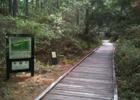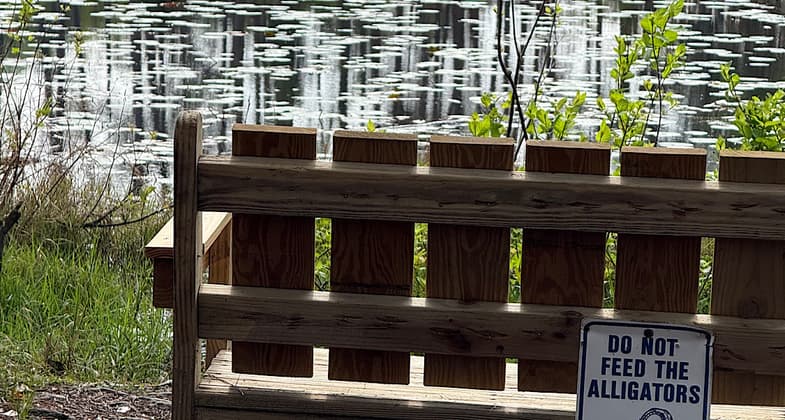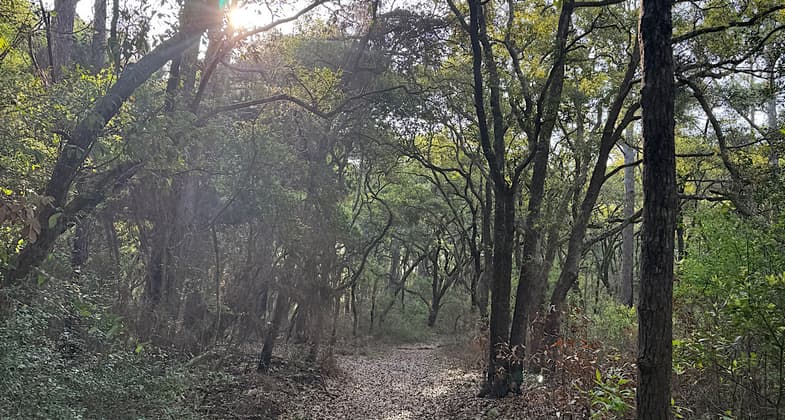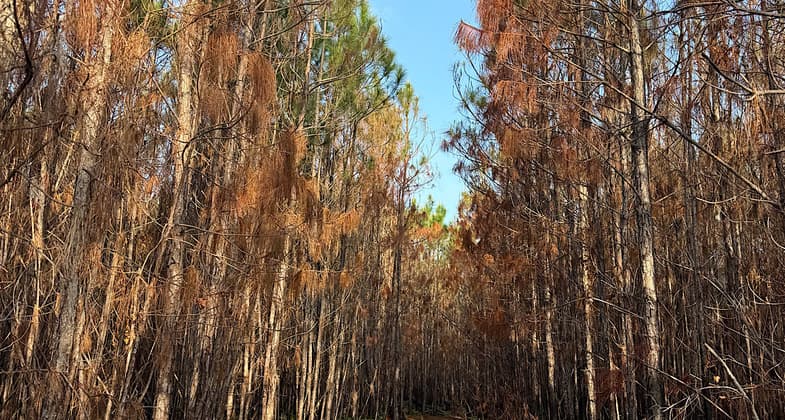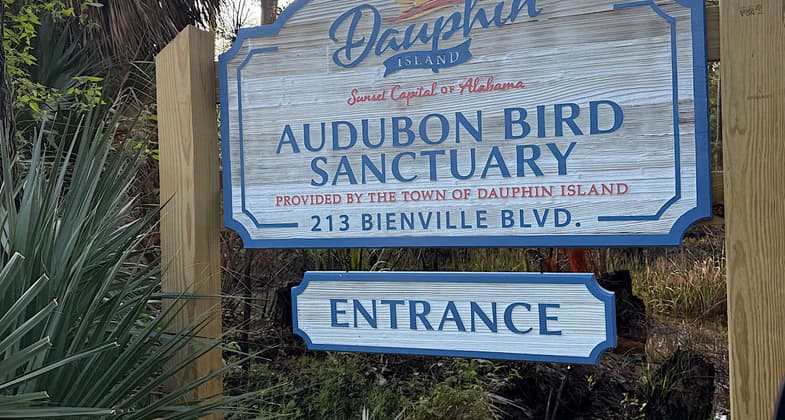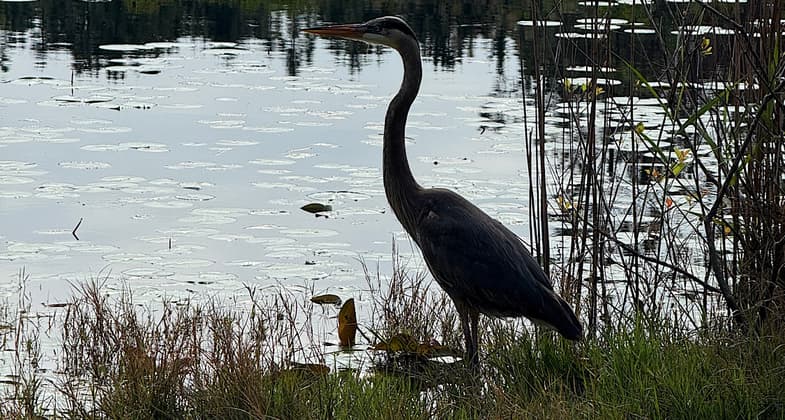Dauphin Island Audubon Bird Sanctuary Trail System
check with the trail manager for updated details before visiting.
Dauphin Island Audubon Bird Sanctuary Trail System
Nonprofit
Backcountry Trail
- Length
3 miles
- Elevation Gain
--
- Route Type
Loop
(2 reviews)
- Length
3 miles - Elevation Gain
-- - Route Type
Loop
Named one of the top four locations in North America for viewing spring migrations, Dauphin Island consists of 164 acres of maritime forest, marshes, and dunes, including a lake, a swamp and a beach.
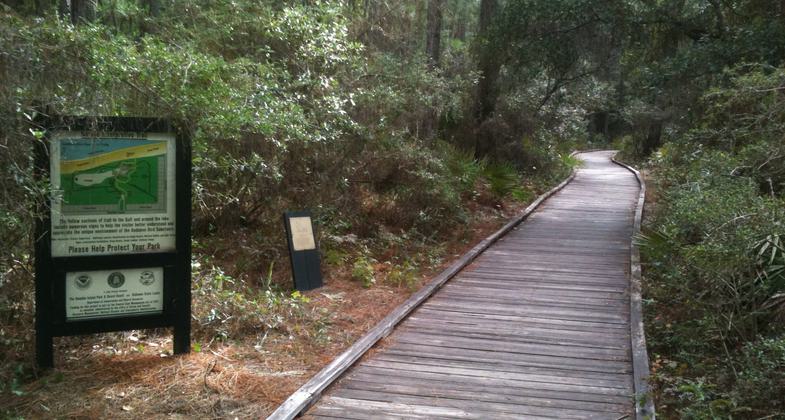
View of the boardwalks. Photo by Matthew W. Capps




photo by Trish Ellis

photo by Trish Ellis

Green Heron on trailside. Photo by Patricia Pierce.

Green Heron on trailside. Photo by Patricia Pierce.

Water at the a park. Photo by Deb Ellis.

Beach to left. Photo by Deb Ellis.
Location: The Audubon Bird Sanctuary is located on Dauphin Island, Alabama, near Historic Fort Gaines.
- States: Alabama
- Counties: Mobile
- Cities/Townships: Dauphin Island
On August 5, 1864, the Confederate troops holding Fort Gaines rained down cannon fire on Union Admiral David Farragut's fleet starting the Battle of Mobile Bay. This Battle is most known for Admiral Farragut coining the phrase "Damn the Torpedoes" Full Speed Ahead!" Most people know the Battle of Mobile Bay as a battle on the sea but it was also a battle on the shoreline of Dauphin Island, Alabama. Historians have records of the Fort's battlefield stretching all the way to what is now known as the Dauphin Island Audubon Bird Sanctuary. Once the Fort fell out of commission in 1926 the United States sold Fort Gaines to the City of Mobile. The City then gave the property to the Alabama Department of Conservation, which deeded it to the Dauphin Island Park and Beach Board. During the development phase of the Dauphin Island Park and Beach Board, Dr. Wilson Gaillard, an avid birder, and conservationist recognized the need to create an Island refuge to protect the natural ecosystem as well as provide safety and resources for the incredible numbers of migrating birds and butterflies on their twice-annual passages. This 164-acre preserve includes the widest possible range of habitats from freshwater lakes, Gulf beaches, swamps, pine forests, dune systems, and hardwood clearings. In 1967, the Park and Beach Board enhanced the status of the Sanctuary by entering into a formal agreement with the National Audubon Society, so that it was officially included as part of the national system of Audubon wildlife sanctuaries.
As the years passed, there was a growing awareness of Dauphin Island's unique location and resources related to the spring and fall bird migrations. Wild Bird Magazine selected Dauphin Island as one of the top four locations in North America for viewing spring migrations! An incredible 347 species have been reported on the island. Spring migration is the first landfall for many Neotropical birds that make the 600-mile flight across the Gulf of Mexico from the Yucatan Peninsula. Under adverse weather conditions, large flocks of exhausted birds of many species may seek shelter on the Island in a truly spectacular fall-out. The Island has also been cited as one of the ten most globally important sites for bird migrations.
The future of this incredible site has never been brighter. It is one of the featured attractions of the Alabama Coastal Birding Trail and a separate project provides an extensive nature interpretive sign system along the paths. Recently, the Bird Sanctuary caught fire and burned just over 60 acres of the Maritime Forest. With the fire freshly on our mind, the Park and Beach Board is in the process of engaging our partners to update the management plan which will include a Fire Mitigation Plan, an action plan to control invasive species and expand the outreach, education, and eco-tourism components to the Sanctuary. We also plan to expand the trail system to allow for enhanced birding trails.
The Bird Sanctuary has a number of trails but visitors enjoy the 1000-foot handicapped access boardwalk from the parking lot to Gaillard Lake in which a finger pier has been constructed along with the beautiful lake where all types of waterfowl can be spotted. The trail system has been enlarged and a raised walkway through the Tupelo swamp has been created. The extensive trail system includes boardwalks giving controlled access to the Gulf shoreline and both a swamp and dune observation platform. We have placed interpretive signage all along the 3 miles of looped trails. We have also recently installed two large nesting platforms in the dune area as part of Alabama's Osprey Nesting Trail. Once on the beach, visitors can walk to historic Fort Gaines, where visitors can tour one of America's Most Endangered Historical Sites of 2011. The trails found in the Dauphin Island Audubon Bird Sanctuary are a family-oriented pathway that provides a safe, non-motorized way to explore the Island's best treasures while exercising, relaxing, and enjoying the Alabama Gulf Coast.
Accessibility Information
No text provided.
Reviews
Patricia Ellis
Well-maintained trails, lovely walk
The trail system is well-maintained, though it could use more signage at intersections. Nice info signs about plants and wildlife here and there. Great boardwalks, beautiful beach. Lovely lake views. Gorgeous forests. Hiked April 1, 2025
Prefer a beach less crowded?
Gorgeous walk down the wood-planked trails end in a delightful and usually very private HUGE beach. Whenever we are in the area and want to take the family to the beach, this is always the one we choose. The scenery throughout the entire park is beautiful, the park is very well maintained and clean, and there are lots of trails to follow. Highly recommend this park to folks of all ages.
Allowed Uses:
Dogs, on leash Hiking/WalkingOther Activities
- Camping
- Heritage and history
- Wildlife viewing / observation
Public Contact
Matthew CappsDauphin Island Park and Beach Board
109 Bienville Blvd.
Dauphin Island, AL 36528
[email protected] • 251-861-3607
Contact the trail manager for current maps and visiting details.
More Details
- Elevation (low): --
- Elevation (high): 20
- Elevation (cumulative): --
- Part of a Trail System? No
- State Designations: Alabama Coastal Birding Trail
- Surface (primary): Soil
- Surfaces (additional): Boardwalk, Grass or Vegetation, Rock, crushed, Sand, Soil
- Tread Width (average): 72"
- Tread Width (minimum): 36
- Running length (minimum): --
- Tread Grade (average, percent): 2
- Tread Grade (maximum): 8
- Running length (maximum): --
- Cross-slope (average, percent): 2
- Cross-slope (maximum): --
- Running length (maximum): --
- Certified as an NRT
May 29, 2012

